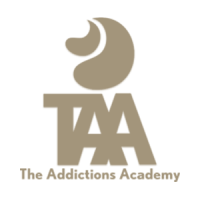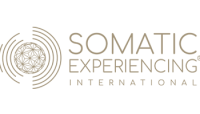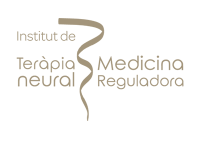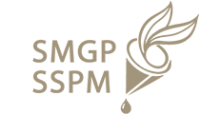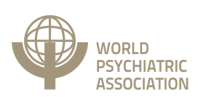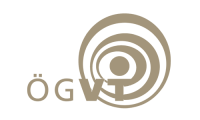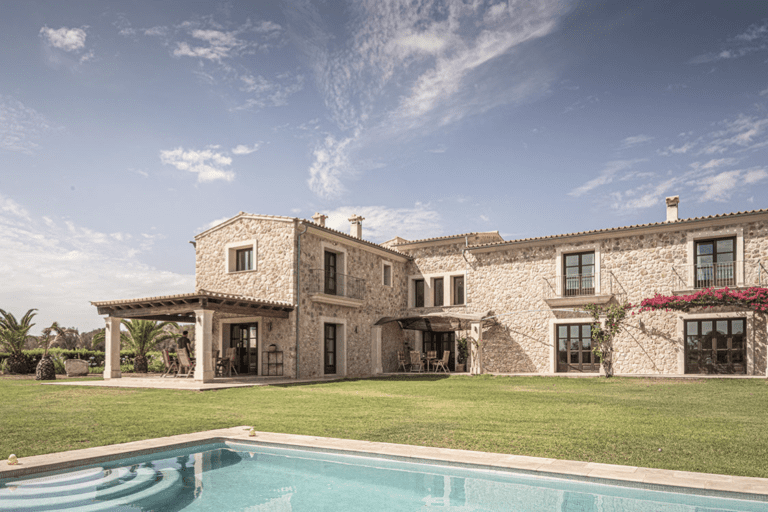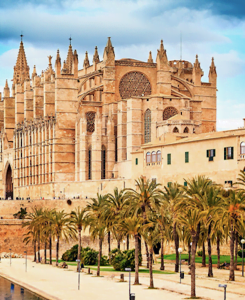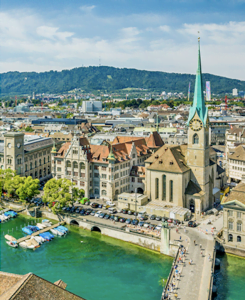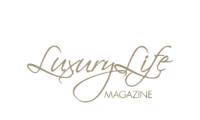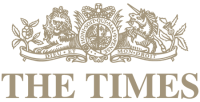PressoTherapy
13 Minutes
Pressotherapy is a non-invasive therapeutic procedure extensively utilized in medical (and aesthetic) settings to improve lymphatic and vascular circulation in the lower and upper extremities.
Also called intermittent pneumatic compression, it enhances the function of the lymphatic and vascular systems in the abdomen and limbs, empties body fluids, delivers oxygen, and eliminates toxins to the tissues.
If it’s the first time you’ve heard about pressotherapy, don’t worry; we’ve devised this article to assist you in understanding what it is and why it is performed.
This article will discuss what to expect after pressotherapy, who is a suitable candidate for this treatment, as well as the benefits and adverse effects associated with this therapy.
Pressotherapy is supposed to aid in lymph drainage, possibly slimming the appearance of the legs and arms (since they contain less fluid), relieving pain, and cleansing the body. Comparable to a massage, an air pressure machine inflates a suit that compresses your legs, arms, or abdomen in a repetitive motion.
Pressotherapy is comprised of a pumping system that is supplied by special equipment with air chambers. These chambers are alternatively inflated, forcing fluid from the extremities of the limbs inside by a mechanical massage that promotes and increases venous and lymphatic circulation. In actuality, the gadget simulates a manual lymph drainage massage by replicating the process of regulated compression on the limbs and belly, with a distal-proximal motion (from the margin to the center).
Medical professionals acknowledge the efficacy of pressotherapy, and its advantages have been established in several clinical investigations for the management of venous ulcers and the prevention of deep vein thrombosis (DVT). Not to mention the crucial role that pressotherapy plays in the wholesome treatment of lymphedema.
Pressotherapy’s compression and decompression technique has the effect of massage, stimulating the body’s natural rhythms, venous return, and thus the clearance of waste substances – with the added benefit of a leaner, more toned physique.
A wonderful method to mix a relaxing moment with the effectiveness of therapy.
There is proof that lymphatic drainage massage, such as pressotherapy, can lessen the look of cellulite and discharge fluid that may accumulate in the lymph nodes following surgery or some cancer therapies.
So when should pressotherapy be used?
Pressotherapy is employed for:
- Emulating the action of massage on the body
- Apply pressure on the blood vessels gently and progressively.
- Drainage of lymph fluids (alleviate swelling of the leg or edema)
- Offers instantaneous leg flexibility and comfort
- Contributes to normal cardiac function (problems can cause tapered edemas due to an improper or inefficient pumping effect)
- Greatly enhances skin tone and decreases under-eye bags
- Improves muscular tone loss in patients who are nearly sedentary
- Offers instant relief and relaxation for heavy legs, cellulite, fluid retention, and poor circulation.
- Contributes to body sculpting and contouring
- Weight management
- Preliminary and post-liposuction therapies
- Decreased regional lipolytic edema (fatty deposits)
- Helps avoid stasis or vascular resistance (stagnation of blood flow capillaries, in veins, and spider veins)
- Enhances blood circulation and oxygenation
- Offers enhanced athletic performance
- Easing of aches and swelling
- Boosts vitality and fights weariness and sadness
Now that we have defined pressotherapy, let’s examine where and how it can be administered.
Generally, there are numerous varieties of pressotherapy, based on the technique and equipment used. The most prevalent is pneumatic (air compression).
However, on occasions and for particular purposes, it might also involve the following:
Bandage-based pressure therapy: It consists of elastic and non-elastic bandages with intense compression, or multilayered bandages. They typically have a beneficial impact on the deep venous system.
Elastocompression boots: These are beneficial for managing lymphedema in the lower limbs. Yet, there are two main varieties: sequential and non-sequential. The sequential boots generate a varying amount of force. In the meantime, the non-sequential boots apply a constant force.
Compressive sleeves: These are tight-fitting clothes that are placed on the upper limbs by a medical expert. In most situations, this is used to treat lymphedema (inflammation caused by blockage of the lymphatic system) or bursitis (inflammation of the joint bursae in the synovial joints).
Pressotherapy is often administered in wellness centers or spas that also include waxing, facials, and massage. A licensed esthetician will administer the treatment. Pressotherapy is comparable to lymphatic drainage massage, however, whereas massage is performed manually, pressotherapy is provided by a machine that consistently applies the precise amount of pressure. The technique is as follows:
When you arrive for your session, you will be guided to the pressotherapy bed or chair. You do not always need to remove your clothing. While it is possible to learn how to perform a lymph drainage massage at home, pressotherapy is always best performed in the office by a qualified practitioner.
The esthetician will assist you in putting on the pressotherapy equipment (a garment that resembles a space suit). This can be draped around your legs, waist, arms, or all three.
The pressotherapy equipment features tubes that are connected to an automated air pressure machine. You will experience a squeezing feeling that should seem like pressure rather than pain as the garment inflates with air.
Typical sessions run between 30 and 45 minutes. Afterward, your body may feel refreshed, and anecdotally, some individuals may experience the urgent need to urinate, which may be caused by the flow of water in the body. You can undergo pressotherapy as frequently as twice each week.
In spas and wellness facilities, pressotherapy is performed utilizing an electronic device that controls the pressure and a suit that covers the regions of the body to be treated. Therefore, manual massage is absent from the ‘pressotherapeutic’ process. A trained esthetician administers the treatment remotely via the dashboard of the device.
Manual lymphatic drainage, also referred to as lymphatic drainage massage is a mild form of massage used to treat severe lymphedema-related swelling in the legs and arms. Lymphedema frequently affects breast cancer and surgery survivors.
Lymphedema occurs when the tissues collect fluid after your circulatory system has delivered blood to your organs and tissues.
The residual liquid is referred to as lymph. The lymphatic system usually gathers lymph and delivers it to the heart via a system of lymph arteries and lymph nodes. When something interrupts the operation of your lymphatic system, lymph accumulates in your legs and arms causing them to enlarge.
A massage therapist employs lymphatic drainage massage techniques to transfer lymph from your body to your lymph nodes, hence reducing tissue edema.
Healthcare professionals are still investigating the efficacy of lymphatic drainage massages. Several studies indicate that those under the age of 60 benefits from lymphatic drainage massages.
Pressotherapy is 600 times more effective than manual massage, allowing for quicker inch loss and cellulite removal. This compression therapy gives a vigorous lymphatic massage to numerous body areas, resulting in increased muscular relaxation and recuperation rate.
The blood and lymphatic circulation are enhanced as a result of pressotherapy. Various other pressotherapy benefits are discussed below:
- It aids in the removal of harmful substances. Lymph carries unwanted substances into the circulation, and pressotherapy improves the elimination of metabolic waste.
- It aids in the removal of edemas and lymphedema. Frequently, a medical procedure or an accident will result in the collection of water or lymph. This sort of treatment aids in the reabsorption of extra fluid.
- Pressotherapy reduces blood pressure. By stimulating the vascular system and removing lymph retention, it aids in lowering blood pressure.
- It bolsters the musculoskeletal system. This treatment strengthens and activates muscles, joints, and connective tissues.
- It enhances the complexion and combats cellulite. Activating the lymphatic and circulatory systems boosts the amount of oxygen in the bloodstream, enriches the tissues, and promotes cell regeneration.
- It alleviates tension. This treatment activates the motor neuron points, which aids in muscle relaxation. Consequently, it reduces stress.
- It enhances immunological function. The improved lymph node function is a consequence of the enhanced lymphatic channel circulation.
If it is appropriate for you, pressotherapy is an excellent approach for weight loss.
Pressotherapy is beneficial if you’re overweight due to or exacerbated by fluid retention or if you have aqueous cellulite. If you are not impacted by these sources of excess weight, the benefits of pressotherapy might be limited.
To have an attractive shape, you must also maintain a healthy body mass index. Adopt healthy eating habits, engage in physical activity, and select a lifestyle that prioritizes sleep and avoids extravagance. Thus, the outcomes will be more rapid and, above all, long-lasting!
To maximize the benefits of pressotherapy, you must consult with your doctor or cosmetologist. He or she will establish the cause of your obesity and determine whether pressotherapy-based treatment is necessary and beneficial.
If you are interested in pressotherapy, you can schedule an appointment with a spa or wellness center that offers the treatment. Typically, a 10-session care program is needed to initiate treatment. Each pressotherapy session lasts 30 minutes.
Talking directly with a spa’s cosmetologist about incorporating additional in-office options into your therapeutic weight reduction program can affect the efficacy of eliminating aqueous cellulite and excess fat. Don’t forget to ask for pressotherapy before and after pictures to have an idea of the what to expect from the sessions.
The treatment is also useful for the rejuvenation and oxygenation of the tissue, which is a plus. Through lymphatic drainage, the process improves skin tone, treats different skin problems, and enhances the evacuation of toxins and fatty areas.
For the best effects, while using pressotherapy to improve skin tone, it is highly recommended to have treatment regularly; a twice-weekly schedule is optimal.
Be informed that there are numerous pressotherapy-based weight loss regimens. If you are looking for a large beauty and personal care panel, you should have more selections that are closer to a holistic body care program.
Generally, beauty care therapies are matched to your age, the severity of your ailment, your lifestyle, and your therapy goals. Before contacting a spa or beauty center offering such therapy, it is a good idea to create a list of the issues you wish to resolve. After that, you may schedule a one-on-one session with an esthetician to explore in depth the services they can provide to address your problems list.
After the consultation, you will be provided with a body therapy blueprint that specifies how many sessions you require and which alternatives best suit you. In general, a weight reduction pressotherapy may contain the following:
- Lymphatic air compression
- Oxygen treatment
- Cupping treatment
- Spa capsules session
- Ionic foot detox treatment
The package may allow you to select one of the following injections to optimally complement your therapy and achieve your aesthetic goals:
- Alpha Lipoic Acid
- Amino acids (BCAA)
- Lipo (MIC & MIC B)
- B-12
- B-Complex
- Glutathione
Is Pressotherapy For Weight Loss Painful?
Pressotherapy is a non-painful treatment intended to improve lymphatic and blood circulation. It is a completely non-invasive and painless detoxification treatment.
You may have muscle soreness in the vicinity of treatment locations. This could be rectified by adjusting the degree of pressure and/or therapeutic mode.
In some instances, red spots on the skin can develop after one or more sessions. You should not be concerned, as these irritations will vanish after your treatment is complete.
However, if you experience any pain, do not wait to inform the esthetician or technician performing the procedure. Afterward, they would have to reduce the pressure to make you feel better and continue the process.
Numerous aesthetic treatments exist for cellulite, but for any of them to have a permanent effect, the following must be met:
- A lifestyle modification
- A healthy, nutritious, balanced diet
- Regular physical exercise
Pressotherapy aids in cellulite reduction and weight loss by enhancing lymphatic drainage and blood circulation by eliminating toxins and removing extra fat.
Ideal prospective candidates include:
- Individuals with fluid retention
- Those who need lymphatic drainage for system detoxification
- Individuals wishing to shed weight or remodel their bodies
- Those affected by lymphedema of the lower extremities
- Individuals who have had surgery (pre- and post-surgical stages)
- Those who have received a combined therapy in aesthetic medicine
Pressotherapy not only has aesthetic advantages like the decrease in limb swelling (primarily as a result of fluid clearance), edemas, toxins, lymphedemas, venous disorders like varicose veins, and aesthetic enhancement of the skin, but also has health benefits like enhanced functioning of the circulatory system, immune stimulation, increased oxygenation of the body, and muscle toning.
Concerning cellulite, you will observe a difference in skin texture and a reduction in the unpleasant orange peel, but it is important to note that it will not erase fatty tissue.
How can I enhance the results of pressotherapy at home?
- Exercise, swim, walk, or engage in any activity that demands leg movement. If you spend a lot of time sitting, stand up at least once every hour and move about regularly.
- Do not wear clothing that is too tight, and aim to wear comfy clothing to prevent swelling.
- It is advisable to consume 1.5L of water every day; the more fluid we consume, the more we aid to eliminate it.
- The most beneficial fasting infusions consist of juniper, horsetail, parsley, and cucumber.
- Consume potassium-rich foods, like vegetables and fruits. And low in sodium, including vegetables (pears, apples, or cherries), potatoes, cereals (rice or oatmeal), soybeans, and other legumes.
- Get sufficient rest and lift your legs daily to prevent leg retention.
- After a shower, rinse your legs with cold water to promote circulation and reduce fluid retention.
In general, this treatment is advised for a wide variety of age groups since it is simple, appropriate, and convenient. However, it is important to note that some people cannot undergo pressotherapy treatment, as it is contraindicated in certain circumstances.
These are the most prevalent contraindications to pressotherapy:
- Deep vein thrombosis
- Chronic heart disease
- Infections of the legs or to-be-treated areas
- Patients with pacemakers
- Severe pain, discomfort, or numbness
- Cancer
Before undertaking any pressotherapy treatment, it is recommended to see a physician, who will address all of your concerns and discuss with you information about the treatment’s safety and any contraindications. The physician will be able to give you the answers and the best course of action for each case based on their diagnosis.
In general, the following are contraindications for pressotherapy:
- Inflammation
- Renal failure
- Tuberculosis
- Heart failure
- Presence of discomfort or neuropathy
- Additional contraindications for pressotherapy include:
- Acute infection
- Hypertension
- Thrombophlebitis (inflammatory condition of superficial veins from a thrombus or clot)
Pressotherapy is widely regarded as a treatment with few dangers and few contraindications.
FAQs
What Is Pressotherapy Lymphatic Massage?
Pressotherapy Lymphatic Massages are non-painful therapies designed to increase the lymphatic system’s flow, hence boosting circulation and detoxifying the body. It is among the most cutting-edge aesthetic therapies, helping to eliminate cellulite and providing a significant overall boost to body systems.
Over time, the lymphatic system might become a little congested as toxins and other impurities become trapped, which can decrease the effectiveness of your immune response and also affect your complexion.
Pressotherapy Lymphatic Massages provide your body’s natural functions a significant boost by stimulating circulation to dissolve extra fat, eliminate cellulite, and revitalize your beauty and health from the inside out.
Is Pressotherapy Appropriate For All Age Population?
Pressotherapy is appropriate for all adults over the age of 18 who do not have any of the foregoing contraindications (unless otherwise recommended by your physician).
Pressure on the arms, legs, and abdomen must always have a soothing, relaxing, and pleasant effect, similar to a massage, and must never cause pain.
If this is not the case, you should immediately discontinue treatment and inform your doctor.
How Many Sessions Are Required To See Results?
It is always challenging to generalize, partly because the prognosis is typically used to define the course of treatment.
The programs and devices, based on published clinical studies, demonstrate that an effective pressotherapy cycle has a minimum of 30 days.
In the event of fluid stasis, a session of pressotherapy will result in a decrease in the arm, leg, or abdominal volume.
In the case of leg weariness or lactic acid due to excessive physical exercise, however, the advantages can be observed after only one or two sessions.
HOW SENSES CAN HELP WITH Wellness
Senses is a leading provider of luxury addiction and mental health treatment for affluent individuals and their families, offering a blend of innovative science and holistic methods with unparalleled individualised care.
A UNIQUE METHOD
successful and proven integrative holistic conceptOur program consists of treating only one client at a time individually designed to help you with all the problematic aspects of your life. All individual treatment sessions will be held at your private residence.
more infoYour program is designed based on your personal needs. The team will exchange daily information and adjust the schedule as we go. Our therapists will work with you treating integrative not just the symptoms and goes beyong your stay to ensure lasting success.
more infoOur biochemical imbalance can be affected by diet and stressful life events, but it often goes back to genetics and epigenetics. We do specific biochemical laboratory testing to determine an individual’s biochemical imbalance. Combining the results of the lab tests with anamnestic information and clinical tests, we prescribe an individualized and compounded vitamin, mineral, nutrient protocol to help recover from various disease states.
more infoOur experts combine the best from psychological treatment, holistic medicine to support you individually and providing complementary therapies all coordinated from one source working complementing each other integrative.
more infoUsing latest cutting-edge technology-based therapies such as Neurofeedback, tDCS, and SSP, we can track the biological patterns of your body, giving us valuable insight into your health and well-being as well support your brain and body performance and recovery with neuromodulation.
more infoOur chef and nutrition specialist will design your personalized diet plan supporting your body & mind recovery as well as helping with weight management. Nutrition workshops and mindful eating sessions will help you to maintain a healthy lifestyle.
more infoWellness TREATMENT LASTING APPROACH
0 Before
Send Request
0 Before
Define Treatment Goals
1 week
Assessments
1-4 week
Integrative Holistic Therapies
5-12 week
Aftercare
12+ week
Refresher Visit
Wellness Insights
latest news & research on Wellness
Stress Management
Stress management isn't a magic wand that makes stress vanish. Instead, it's a toolkit full of strategies and techniques that help you handle stress better
read more
Leadership Burnout
Leadership burnout, often termed executive burnout or executive stress syndrome, encapsulates the exhaustive toll that high-stakes leadership roles take on individuals
read moreAccreditations


